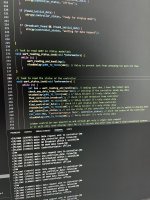Aleksandr0000
1 µW
Hello! Has anyone figured out the CRC16 calculation in the latest versions of the controller? I found this information: Poly: 0x8005, Init: 0x7F3C, RefIn: true, RefOut: true, XorOut: false. But it doesn't work for my controller. Here is one of the parcels, you can check:
AA 80 85 07 11 20 00 00 00 00 00 00 00 00 1F FF
AA 81 74 00 79 00 00 00 00 00 00 00 00 00 A2 5D
AA 82 00 00 00 00 00 00 00 00 00 00 00 00 C5 2A
AA 80 85 07 11 20 00 00 00 00 00 00 00 00 1F FF
AA 81 74 00 79 00 00 00 00 00 00 00 00 00 A2 5D
AA 82 00 00 00 00 00 00 00 00 00 00 00 00 C5 2A
Last edited:


